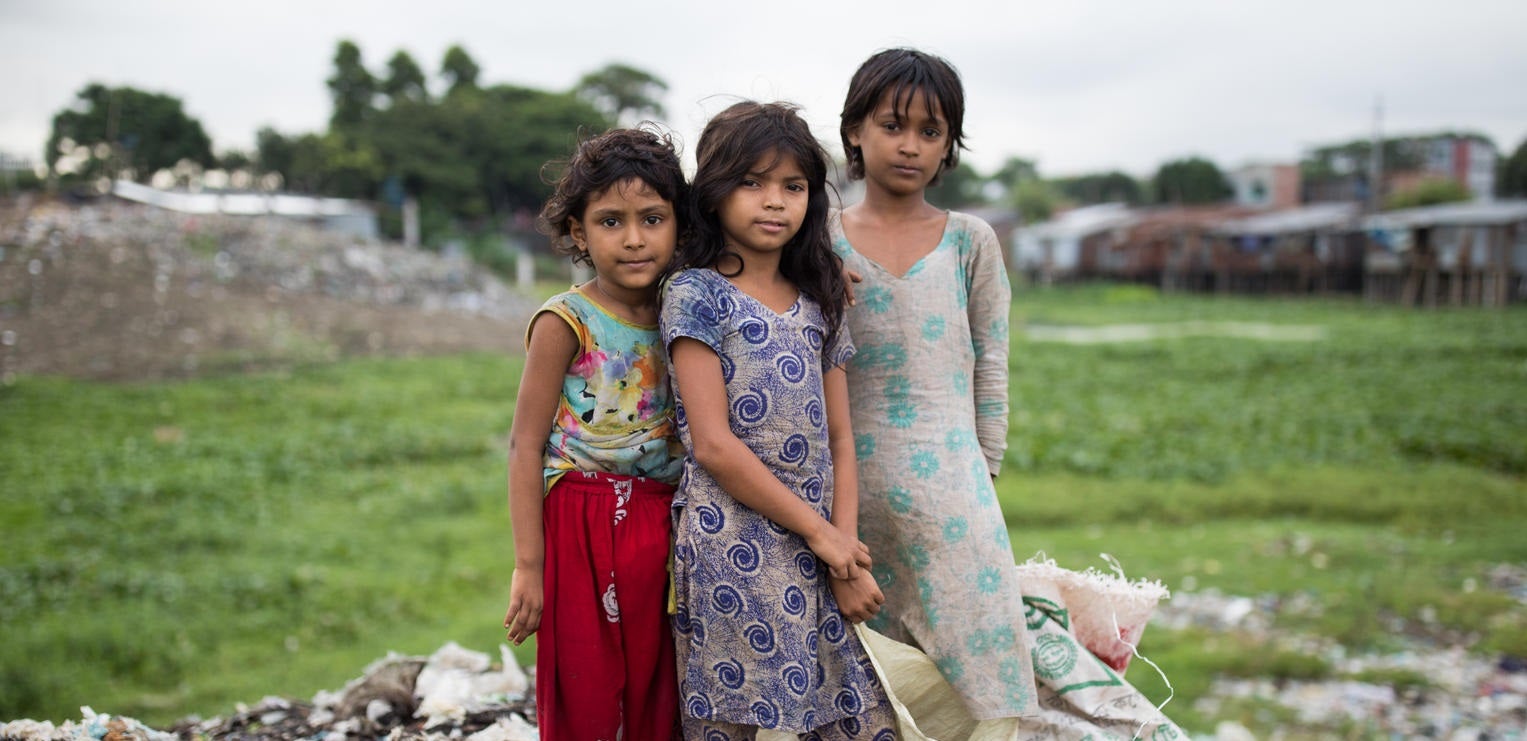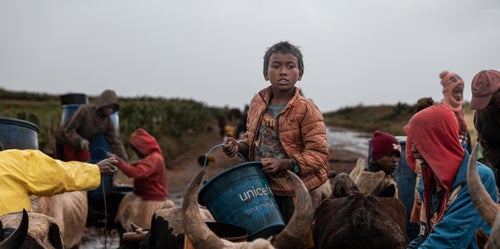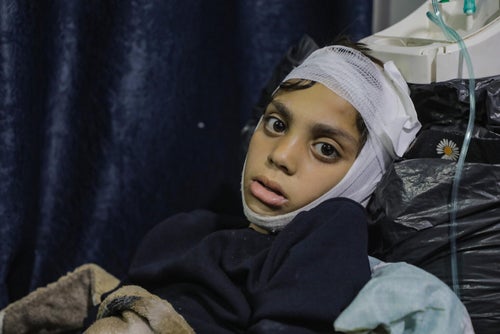Over one billion children around the world are at extremely high risk of the impacts of climate change. That is nearly half of the world's children.
Bushfires take away children's homes, floods destroy their schools and hospitals, and it is difficult to get enough food and clean water during drought. More and more extreme weather events are affecting children around the world and here in Australia.
Climate change is changing childhoods right now.
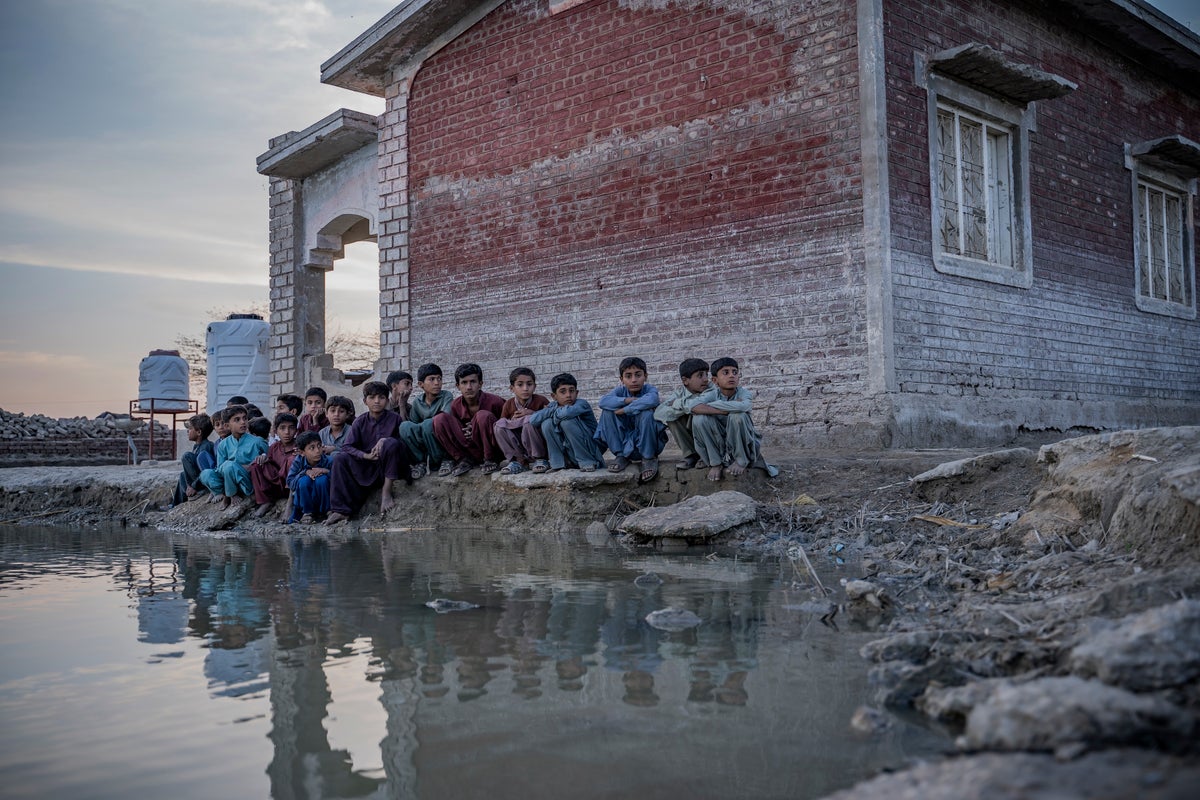
The historical floods in South Asia in August, 2022, were widespread – affecting children in Pakistan, as well as Bangladesh, northern India, and Afghanistan. Children, especially in vulnerable areas, are still bearing the biggest burden.
We need to treat climate change like the crisis it is and act with the urgency required to ensure children inherit a liveable planet.
Back-to-back cyclones in Bangladesh
Two climate disasters, one year apart, have devastated the country of Bangladesh. Children’s lives have been put at risk of disease, drowning and malnutrition due to the impact of the two cyclones.
Cyclones inflict damage without discrimination, disproportionately affecting the most vulnerable and children. A child who can’t go to school due to a climate disaster, such as a cyclone, is a child who misses valuable learning opportunities. And when these disasters occur repeatedly, a child’s future potential is at risk.
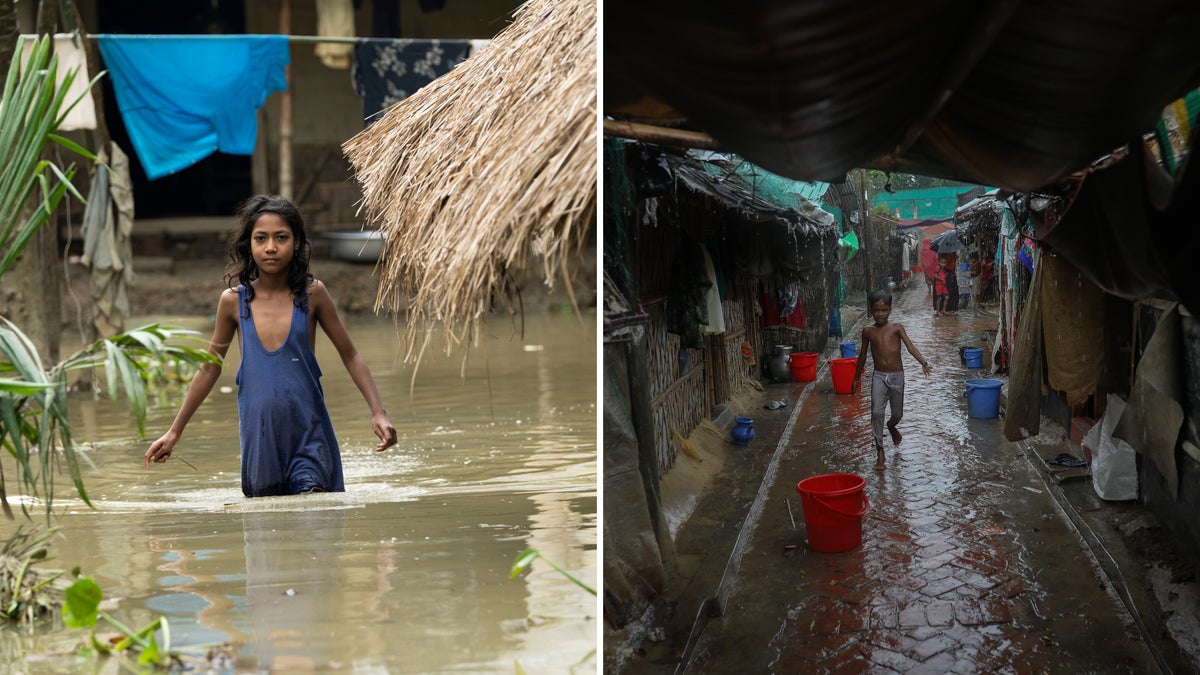
In May 2023, a cyclone warning rang out through Cox’s Bazaar in Bangladesh, the largest refugee camp in the world. Families huddled together in their makeshift homes, waiting for the cyclone to pass.
The strong winds and heavy rainfall of Cyclone Mocha tore down trees, shelters, and essential facilities. In the aftermath, children and their families were left to repair the damage to their homes.
Activists, like UNICEF Bangladesh Youth Ambassador Farzana, are taking action against the climate crisis.

"Being an activist is not a choice for me. It’s a responsibility. I can't choose not to be vocal when people are suffering. I’m on a journey to change the status quo. A status quo where the most vulnerable in the world are paying the heaviest price for climate catastrophes."
Drought in Ethiopia
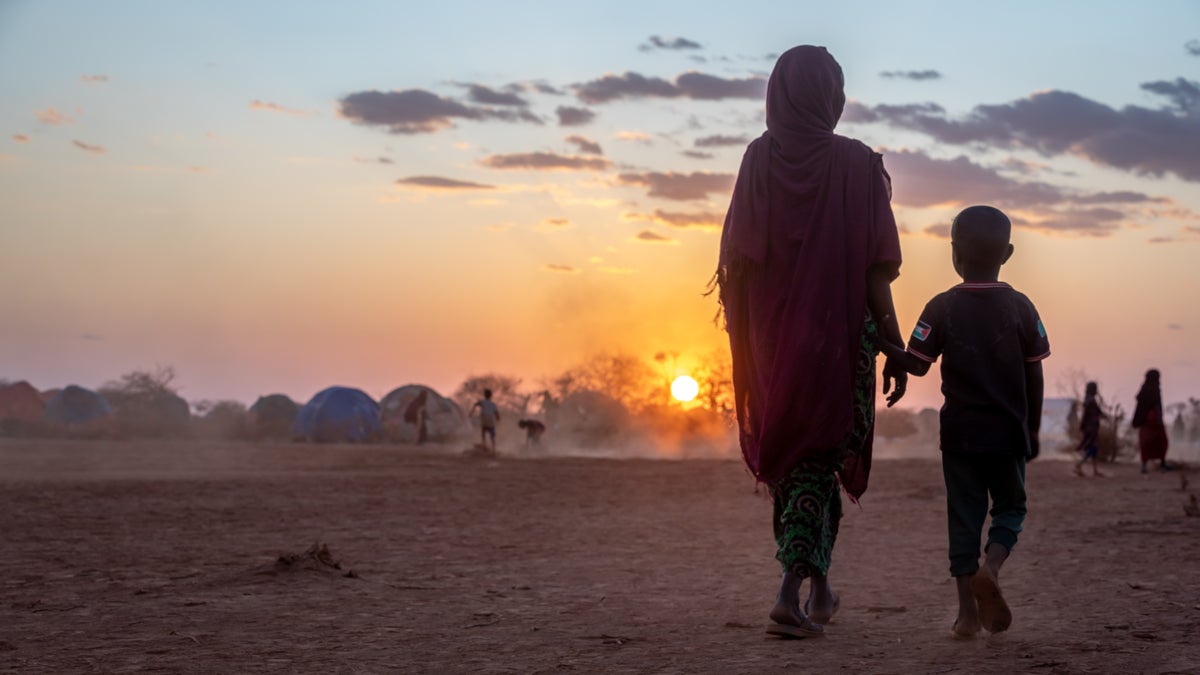
The climate crisis that is unfolding in the Horn of Africa right now is a child rights crisis. And children are paying the heaviest price. Parts of Ethiopia are presently experiencing one of the most severe La Niña-induced droughts in recent decades, with more than 8 million people acutely food insecure.
In the Somali region in the eastern part of Ethiopia, thousands of women and children are currently displaced by severe drought and are living in dire conditions.

Around the world, a child born in 2021 will experience, on average, nearly three times as many droughts and crop failures as their grandparents.
Due to the drought, the education of over 1.6 million children has been negatively impacted, including an estimated 480,000 children forced out of learning due to the closure of 1,749 schools.
Air pollution in Afghanistan

A toxic haze of pollution hangs over the capital of Kabul in Afghanistan, every winter. The city is home to over six million people, and it ranks as one of the most polluted cities in the world. Children and the elderly are at increased risk of respiratory infections, including pneumonia, due to the release of fine particulate matter into the air from the burning of fossil fuels, and other environmental contaminants.
Almost 90 per cent of children globally (2 billion children) are currently highly exposed to air pollution that exceeds 10µg/m3. This is likely to get worse unless there is a reduction in fossil fuel combustion that causes air pollution.
Flooding in South Sudan
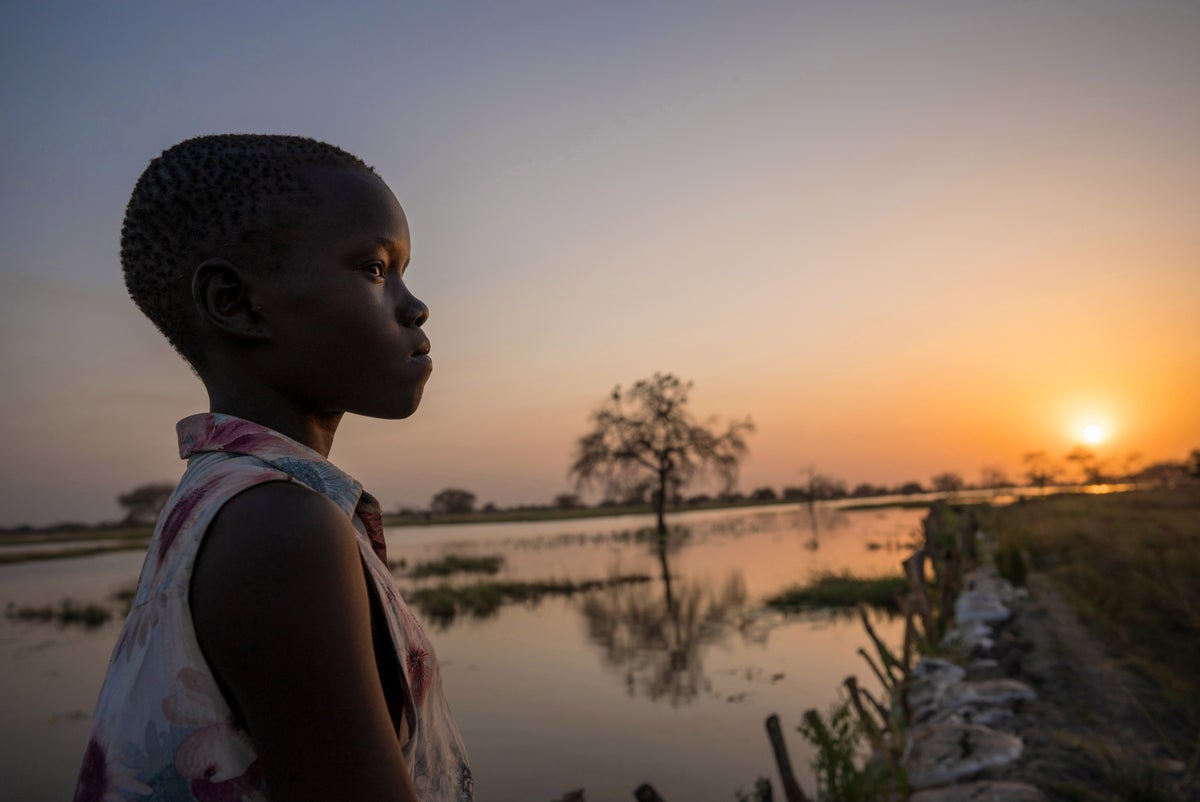
"I fled our village with my family because of the flooding. Literally everything was destroyed. I was out of school for a long time. I've now started attending a school here which I love but a lot of my teachers are now leaving because they are scared that the flood water will rise. We're living here at the mercy of nature and the dyke protecting the village may collapse at any point."
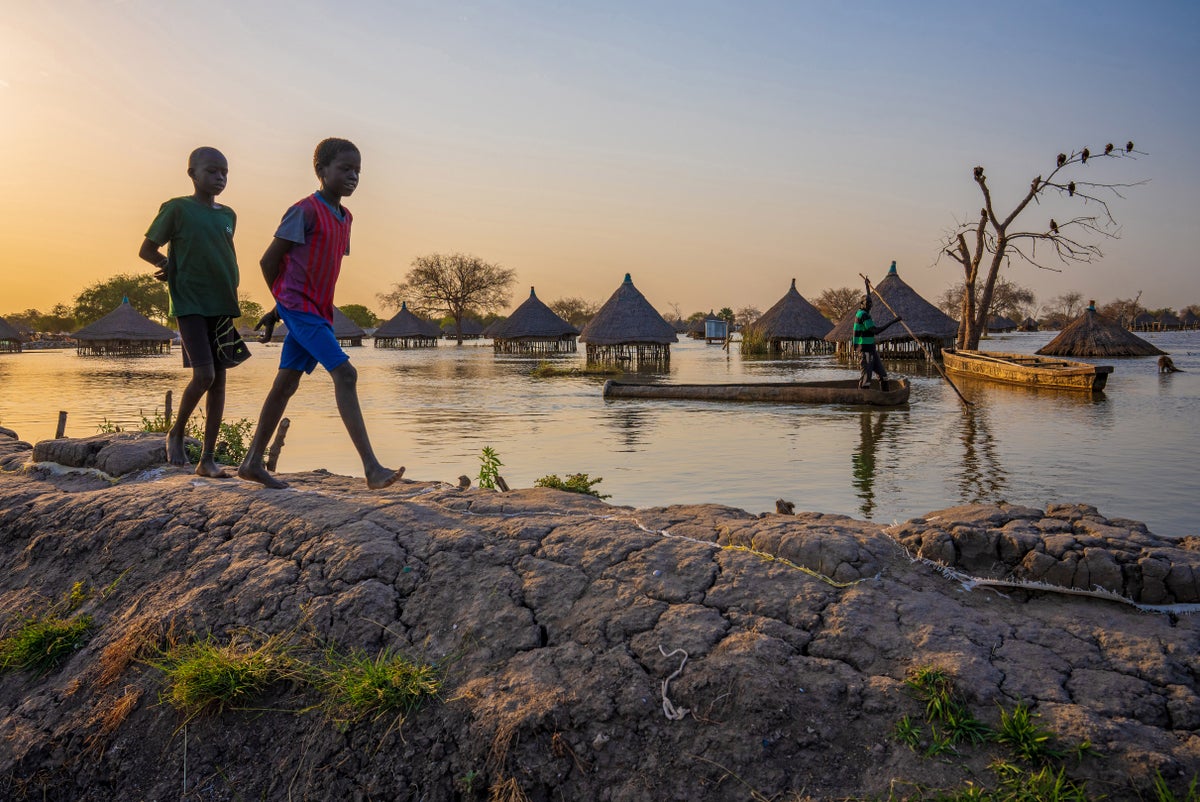
Climate change is impacting children in South Sudan like never before. Young people living in South Sudan are among those most at risk of the impacts of climate change, threatening their health, education, and future.
Children in 98 percent of African countries are at high risk of the impacts of climate change.
Waiting for rain in Somalia

Children in the Horn of Africa are currently experiencing the impacts of one of the worst climate-induced emergencies of the past 40 years. The prolonged drought in Somalia has brought hunger, thirst, displacement, and death to already vulnerable communities.
As crops fail and livestock perish, people are facing dire circumstances.
In a bid to survive, communities are resorting to extreme measures. Out of sheer desperation, thousands of families are leaving their homes in search of water, food, pasture, and medical care for their children.
We need to treat climate change like the crisis it is and act with the urgency required to ensure children inherit a liveable planet.
Water shortages in Kiribati
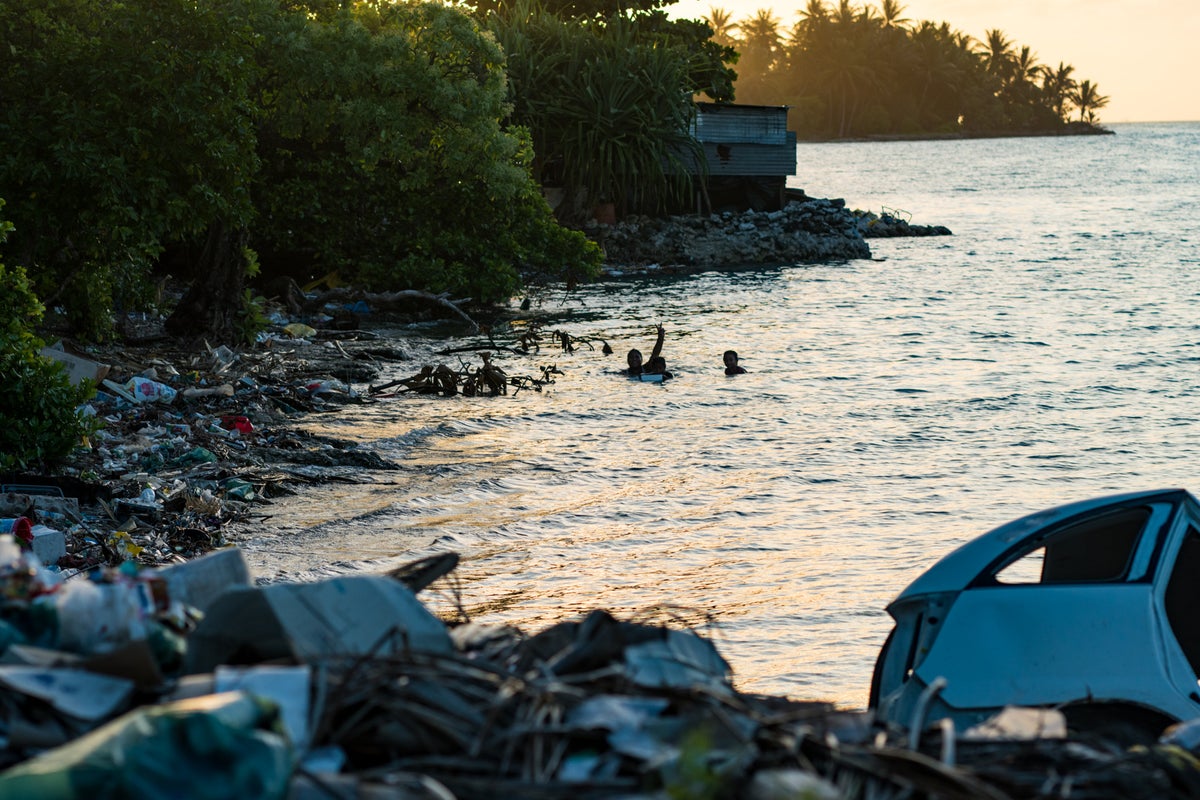
Kiribati, a small climate-affected island nation in the Pacific, is a place where access to safe and clean water is a challenge. Lack of access to clean water increases the likelihood of diseases such as rotavirus, which can cause a severe form of diarrhoea and is responsible for a significant portion of deaths in under-fives in the country.
2.2 billion
Around the world 2.2 billion people still lack access to safe drinking water.
1 in 4
If we don't act now, by 2025, one in four people may live in a country affected by chronic shortages of fresh water.
Heatwaves in Thailand

Sustained high temperatures significantly affect children's day-to-day lives, well-being, and development.
Children in Thailand are at high risk from climate change, especially those living in the northeastern and southern provinces. Other climate hazards affecting children across Thailand are floods, droughts and high temperatures, leading to water contamination, disease spread, and food insecurity.
July 2023 was the hottest month ever recorded globally, raising further concerns about a future where children are expected to face more frequent and severe heatwaves, largely due to climate change.
In fact, every single child in the world is expected to suffer from at least one climate-change-related event in the next ten years.
Related articles
Stay up-to-date on UNICEF's work in Australia and around the world


